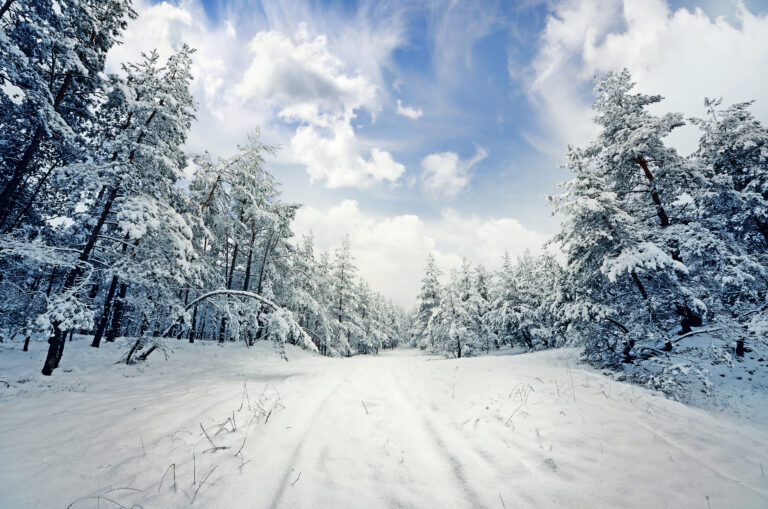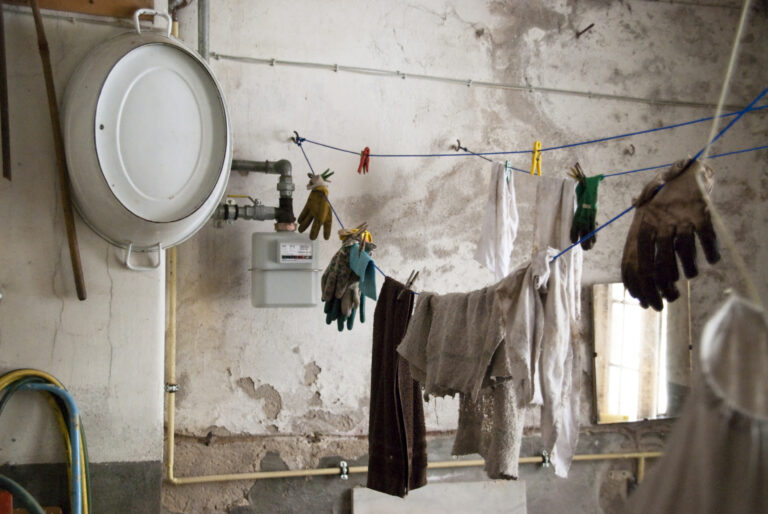Snowmelt is the term used to describe the process of snow melting into water. Runoff from snowmelt is a natural and important part of the water cycle worldwide. For example, floods claim the Rochester, New York area on the regular because of the ever-changing freeze and thaw weather they experience year-round. We will go into more detail later in this article.
In the western U.S. and Canada, mountain snow fields and glaciers become repositories of water during the cool season when most precipitation falls. According to the U.S. Geological Survey (USGS), these natural water reservoirs hold as much as 75% of the water supplies in some western states. They release water into rivers when the season changes and warms.
Snowmelt Flooding Info You Should Know
Snowmelt flooding is a major concern when springtime comes around. Also known as rain-on-snow events, snowmelt flooding is an annual event in the Pacific Northwest and other areas of the country and the world. Flooding ensues from the snowmelt runoff that drains away like rainfall due to the still-frozen ground.
“Frozen ground does not absorb the way the ground does when it’s warmed up, when it’s thawed,” Luke Stevens, environmental manager for Beckley Sanitary Board in West Virginia, told RochesterFirst.com. Stevens said this to caution people that while the glimmer of sunshine on icicles and fallen snow is dramatic, they have to keep in mind the possible consequences of melting snow, which is flooding.
When combined with excessive rainfall and warm and humid air, snowmelt runoff can result in downstream flooding. In addition to flooding, snowmelt runoff could also potentially cause debris flows and landslides.
Debris Flows
Debris flows consist of sediment, soil, rock and organic matter plus water to form a slurry mixture that moves rapidly downslope. It represents a severe hazard in mountain regions, including canyons and steep gullies, worldwide where it is a common occurrence.
An example is the debris flow that occurred in Yosemite National Park in June 2019. Triggered by a landslide, the debris flow carried soil, boulders and trees downslope. By the time it reached Highway 120, it had been reduced to a muddy slurry thanks to a forested area that acted as a strainer.
Because debris flows happen without warning, can be extremely rapid in their movement downslope, and might carry large boulders or other dangerous debris, they can be deadly. They even have the potential to move large houses. In addition, they can also fill up structures with mud, sediment and other organic matter. If they reach water supplies, debris flows bring with them silt and other debris that can drastically impact the quality of the water.
Landslides
These events only have two causes: natural or as a result of man’s actions, or a combination of the two. Regarding the former, snowmelt and rainfall are two primary causes of landslides. When rain falls or snow melts, the soil in the slope gets saturated and loosen, resulting in a landslide.
Another possible cause of landslides is flooding. However, landslides can also cause floods when the former causes a blockage of the normal flow of streams and rivers.
Ice Jam Flooding
Another consequence of melting snow and ice is ice jam or ice dam. This refers to the clump of ice chunks blocking the flow of a river. Ice jam flooding is the result of an ice jam. The National Weather Service (NWS) says it only takes three to five consecutive days with daily maximum temperature in the 40s for a frozen stream to break up into ice chunks.
13 Wham ABC, in its coverage of Rochester, New York’s changing weather, has a great summary of how ice jams are formed and the flooding that ensues: “First, rapid snow melt is taking place with air temperatures between 45 to 50 degrees….
Second, the ground is frozen and doesn’t allow for the natural absorption of the melting snow and additional rainfall, so all of the precipitation turns into run-off, which eventually makes its way into our tributaries.
Third, as the temperature rises, the ice cover on our creeks and rivers will start to break up and flow. These pieces of ice can drift downstream from where they formed and get stuck in narrower areas of the tributary.
As the ice gets stuck, it builds a natural dam that blocks the flow of water. This results in a build up of water behind the ice jam that creates flooding for areas upstream of the block.”
When chunks of ice block the flow of rivers, its waters overflow and flood nearby communities. Ice jams can form in places with cold winters that can freeze rivers. According to NOAA SciJinks, these include Alaska, the Midwest, and the Northeast.
The 1996 Snowmelt Flooding
The snowmelt flooding that occurred in January 1996 is an example of how destructive such a natural event can be. The result of heavy snowfall followed by a sudden thaw and heavy rain led to rapid snowmelt that caused massive floods along rivers from New York to Virginia.
In the state of New York, the Catskill Mountains and the surrounding region were severely affected by the widespread flooding, according to the USGS. However, the flood’s destruction was highest along Schoharie Creek and the Delaware River’s east and west branches. In the aftermath, 10 people died while hundreds more were stranded. Plus, the storm and flood closed hundreds of roads, destroyed bridges, and ruined thousands of houses and other structures. The total damage exceeded $100 million.
Meanwhile, in the Mid-Atlantic, the storm caused severe flooding on many tributaries of the Chesapeake Bay. The USGS reports 7.5 billion pounds (around 3 billion kg) of sediment reached the bay from its major tributaries. This was 17 times the amount it received during an average January. In addition, the flood also carried to the bay 63 million pounds (about 29 million kg) of nitrogen and 5.3 million pounds (around 2 million kg) of phosphorus, which were three times the amount of nitrogen and six times the amount of phosphorus during an average January, respectively. Three times the amount of freshwater also entered Chesapeake Bay because of the massive flood.
In Portland and other parts of Oregon, the storm resulted in one of the biggest floods the region ever faced. “I’ve never seen anything like this before and I have been in Oregon for 25 years,” said a resident of Oregon City. “Last night, the water had not reached the McDonald’s parking lot. Now McDonald’s looks like it’s in the middle of the lake.”
If not for the efforts of U.S. Army Corps of Engineers, the damage would have been worse. They “saved downtown,” as The Oregonian reported.
Snowmelt flooding
Snowmelt flooding poses a significant threat during spring, causing floods, debris flows, landslides, and ice jams. Devastating events like the 1996 snowmelt flooding highlight the destructive power of nature.


